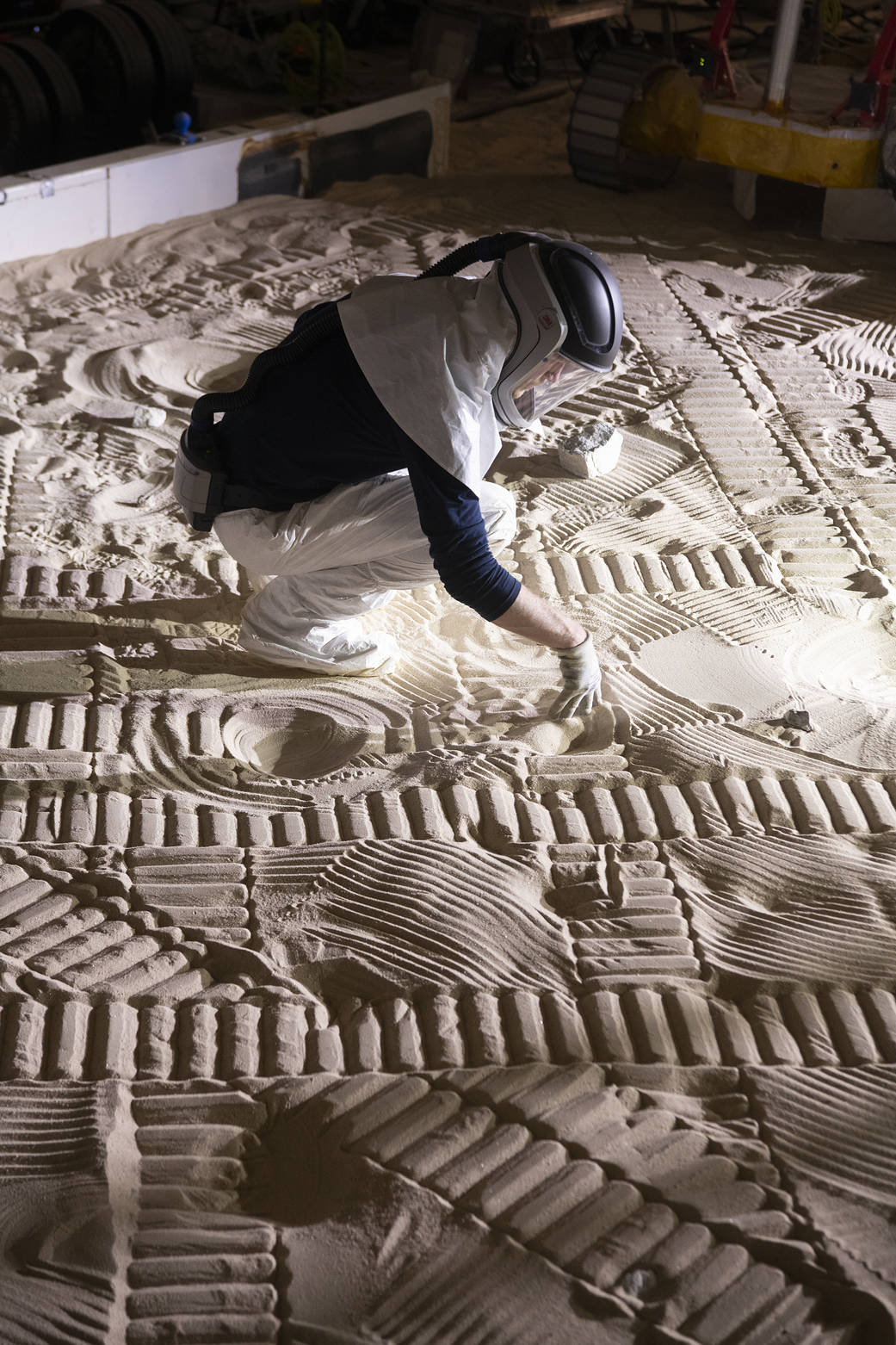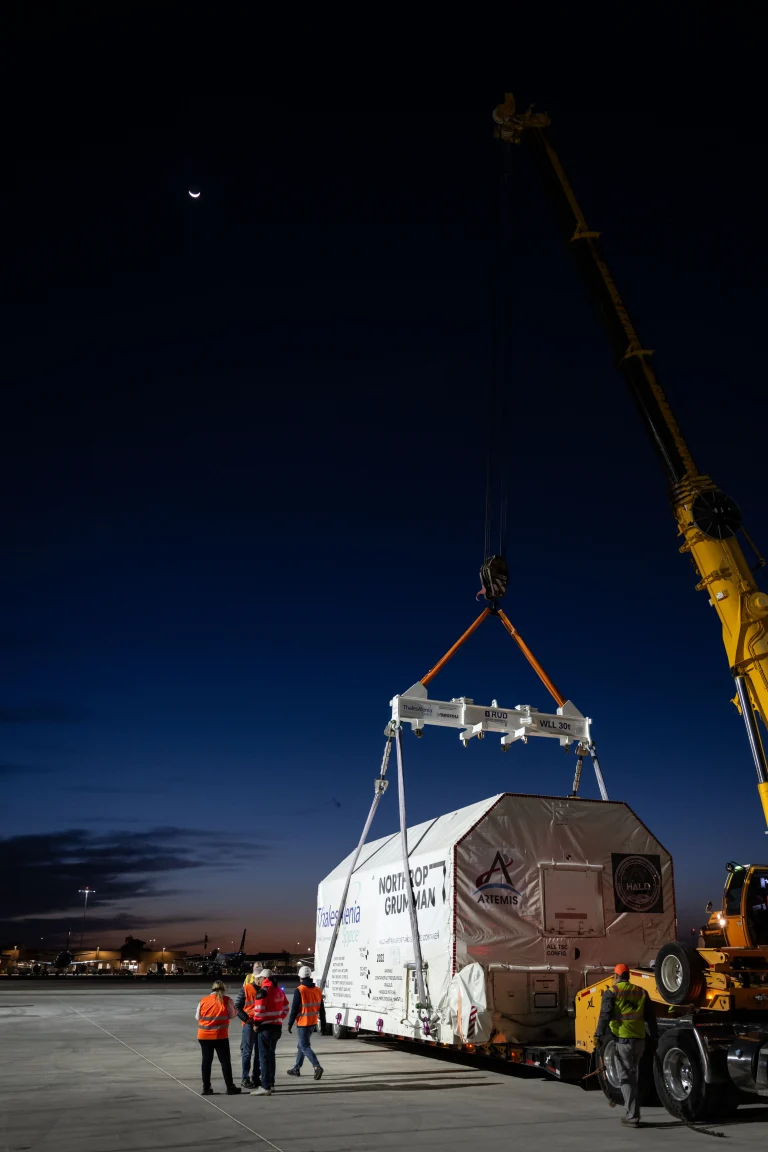The VIPER (Volatiles Investigating Polar Exploration Rover) engineering test team uses lunar soil simulants and hand-picked rocks to carefully shape the terrain to realistically mimic actual features at the surface of the Moon’s South Pole at in the SLOPE Lab – short for Simulated Lunar Operations Laboratory at NASA’s Glenn Research Center in Cleveland.
Kevin May, rover and mission systems engineering intern at NASA’s Ames Research Center in California’s Silicon Valley led the terrain preparation for the test.
“Using data and imagery from previous lunar missions, we created various randomized scenes to mimic the surface terrain of the Moon, with craters and rocks of different sizes and shapes scattered over the SLOPE tilt bed,” May said. “With help from the VIPER science team, which generated cut-out templates of crater profiles, we were able to form features out of the terrain and shape more accurate craters than ever before. By recreating realistic Moon-like environments, we can get a much better idea of how VIPER will perform on the surface.”
Image credit: NASA/Bridget Caswell
VIPER(挥发性物质极地探测车)工程测试团队在NASA位于克利夫兰的格伦研究中心的模拟月球操作实验室(简称SLOPE实验室)中,使用月球土壤模拟物和精心挑选的岩石精心塑造地形,以逼真地模拟月球南极表面的实际特征。
位于加州硅谷的NASA艾姆斯研究中心的月球车和任务系统工程实习生凯文·梅领导了测试的地形准备工作。
“利用以前月球任务的数据和图像,我们创建了各种随机场景来模拟月球表面地形,在SLOPE倾斜床上散布着不同大小和形状的陨石坑和岩石。”梅说。“在VIPER科学小组的帮助下,该小组生成了陨石坑轮廓的剪切模板,我们能够从地形中形成特征,并塑造比以往任何时候都更准确的陨石坑。通过重现逼真的月球环境,我们可以更好地了解VIPER在月球表面的表现。”
影像来源:NASA/Bridget Caswell







